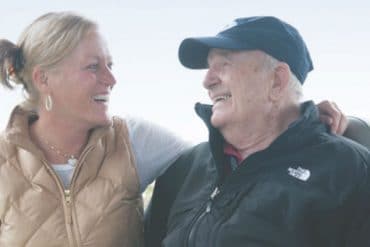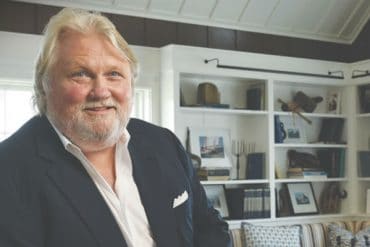 Last month, the Massachusetts Department of public Health released dispensary-permitting guidelines, bringing Nantucket one-step closer to offering medicinal marijuana to local patients. Many wonder if legalizing this potent symbol of the American counterculture will spark a new island economy or just leave Nantucket dazed and confused.
Last month, the Massachusetts Department of public Health released dispensary-permitting guidelines, bringing Nantucket one-step closer to offering medicinal marijuana to local patients. Many wonder if legalizing this potent symbol of the American counterculture will spark a new island economy or just leave Nantucket dazed and confused.
Seventy-five percent of island voters supported the medical marijuana bill in last November’s election allowing qualified patients to possess up to a sixty-day supply of cannabis without criminal or civil penalties. In order to secure this medical marijuana a doctor must recommend patients to the state-run patient registry where qualifying conditions include cancer, glaucoma, HIV/AIDS, hepatitis C, ALS, Parkinson’s disease, multiple sclerosis and other debilitating conditions. Many islanders are looking to have a marijuana dispensary not as a Colorado-style head shop, but as a source of plant-based medicine.
One such supporter is John, an island native and thirty-year-old carpenter who spoke under a pseudonym to remain anonymous. In 2003, John contracted a bacterial staff infection in his left hip and was prescribed antibiotics and pain medications. “I was nauseous all the time due to the antibiotics,” he says. “I didn’t feel like eating, and food was essential to my recovery.” John started using marijuana to increase his appetite and ease his nausea. He was also prescribed Percocet and Oxycodone for his pain. The doctor warned him that he could become physically addicted to these drugs and would need to wean himself off of them. Daily marijuana use helped John transition off the opiates. “Marijuana provided a sense of euphoria without the physical addiction,” he says.
At least one study shows evidence of the benefit of marijuana in combination with opioid painkillers. The American Society for Clinical Pharmacology and Therapeutics published a study in 2011 that found that vaporized marijuana enhanced the pain relieving effects of opioids allowing patients to take lower doses of addictive painkillers and decreasing their side effects. In spite of such studies, the laws seem to be lagging behind the science, and the science is lagging behind people’s anecdotes of the beneficial use of medical marijuana.
Of course, not all members of the medical community are so high on marijuana as medicine. “I wasn’t impressed with marijuana in the sixties and seventies, and I’m not impressed with it now,” says Nantucket doctor George Butterworth. Although Dr. Butterworth says that “Marijuana is probably less of a burden on society than tobacco and alcohol,” he is not convinced that anecdotes like John’s are enough to prove marijuana’s medical legitimacy. He argues that although most medicines are derived from plants, prescribing a whole plant is not typically accepted amongst Western medical doctors in the twenty-first century. Aspirin, quinine, morphine and digoxin are just a few examples of important drugs synthesized from isolated plant compounds. Marijuana may be radical within the medical establishment not because it is an illegal drug, but because it is a whole plant. Despite his professional opinion, Dr. Butterworth says if a patient on chemotherapy thinks marijuana will help ease his or her pain, he would be happy to write a prescription.
It is yet to be seen how medical marijuana will affect the island once a dispensary opens, but states like California and Vermont offer valuable clues. Medical marijuana in California is a regulatory nightmare, whereas in Vermont it falls under a tightly regulated system where only qualifying patients are informed of dispensary locations. The regulations that govern medical marijuana on Nantucket will determine how it gets used or abused. The differences between California and Vermont are generally representative of the differences between East Coast and West Coast medical marijuana laws: The East Coast is much more conservative. The Vermont and Massachusetts laws only make marijuana available to patients with debilitating conditions. By contrast, California casts a much wider net, including patients with arthritis, migraine, chronic pain and epilepsy on their list of qualifying conditions. Perhaps most significantly, Vermont only allows dispensaries to distribute two ounces of marijuana per patient per month. In California, legal limits vary by county, but it is not uncommon to obtain four ounces in a single day.
One need only look to the sky over the years to see how Nantucket has dealt with marijuana in the past. For years, blacked-out surveillance helicopters have been deployed over the island in collaboration with the state and federal police to spot any illegal crops being grown. Last August, the police confiscated many marijuana plants and arrests have since been made for small possession. With community dialogues and the proper regulations in place, perhaps medical marijuana can reach its potential as a healing plant while shedding its reputation as a dangerous, addictive substance. As founding father and hemp farmer, Thomas Jefferson, once said, “The greatest service which can be rendered to any country is to add a useful plant to its culture.” We’ll just have to wait for the smoke to clear to see if this proves true on Nantucket.





